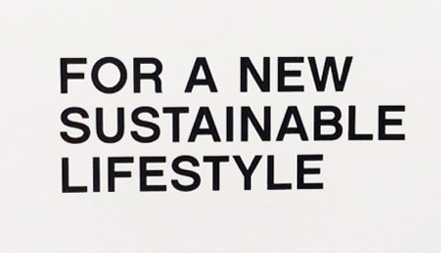Few things can bring on dismissive eye-rolling in a sophisticated consumer like a luxury-goods giant talking about social responsibility and sustainable production. Inevitably, suspicions of ‘greenwashing’ and token gestures are quick to surface. Yet something of substance does seem to be happening.
At one end of the spectrum, luxury powerhouses such as the Kering group, LVMH, Burberry and Hermès are beginning to integrate sustainability strategies into the mechanics of their businesses; and at the other, a clutch of innovative brands is emerging that has successfully fused ethical values with smart design.
As our demands for transparency increase, sustainability – what used to be seen as a dry, technical issue involving complex studies of biodiversity and supply chains – is even becoming sexy. The results can be seen in Gucci’s bags crafted in heavy-metal-free tanned leather, Warby Parker’s eyewear (for every pair purchased, funds are donated to non-profit partners to supply free eye care to people in need) and Patagonia’s recycled Yulex bio-rubber wetsuits. There is also an increasing openness to new ways of doing things and the forging of new connections between businesses, NGOs and universities.
Luxury fashion is still often perceived as wasteful, irrelevant and indulgent, and the turnover of trends that is necessary to make fashion happen appears antithetical to the principles of sustainability.
But the smarter businesses are trying to tell and sell a different story, broadening the definition of quality to include environmentally and socially positive methods of production as well as focusing on innovative design, craftsmanship and fine materials.
That investment purchase could now be a positive acquisition that safeguards the environment rather than destroys it. As Professor Dilys Williams, director of the Centre for Sustainable Fashion at the London College of Fashion, says, ‘Sustainability is a hugely complex discipline. It is technical, mathematical and psychological, and it is also about economics. Fashion is about navigating how we live today – it is a snapshot of our world. Fashion and sustainability have to be a good match.’
The impetus to make a meaningful match galvanised François-Henri Pinault, CEO of Kering – which own Gucci, Saint Laurent and Bottega Veneta among other brands – into hiring a chief sustainability officer in 2012. Marie-Claire Daveu, formerly of the French Ministry of Ecology, is now three years into the newly created role. ‘Sustainability is the most important issue of our century,’ says Daveu unequivocally. ‘My role is to provide an overview, a strategy, a vision and create an action plan. If we are speaking about a vision, for Pinault it is about putting sustainability at the core of the business strategy.’
Daveu knows there are no quick fixes. ‘While sustainability is without doubt a business opportunity, it is fraught with challenges and unknowns,’ she says. ‘As such, it is a journey – no matter the size of the business – and it takes time. What is essential is to act and to make a start in areas where positive results can be achieved. Once you start looking at your business through the lens of sustainability, you will see that businesses touch the environment and deal with people and communities at every step of their complex supply chains. Prioritisation and focus are essential.’
In spring 2012, Pinault announced an action plan with key targets including the reduction of CO2 emissions and water consumption at the top of the agenda. Environmental footprint is measured at every level, from cattle farming to production. A Materials Innovation Lab was founded in 2013 and this year sees the implementation of EP&L (environmental profit and loss) accounting across all brands.
It is Daveu and her team’s job to make this mind-boggling amount of data tangible to the CEOs atop Kering’s family of brands. ‘You have to be able to identify weaknesses and strengths and make a strategy for investment and implementation of the most efficient methods,’ says Daveu. ‘It is about developing a common language with the financial team. Talking about biodiversity with a CFO is not that easy. But when you speak in monetary terms, it’s very useful.’
Kering is an important test case of sustainability in action because of its size and the diversity of its brands. What is good practice for Gucci might not make sense for Saint Laurent or Brioni. Brand-specific plans have to be drawn up. In 2014, achievements included introducing LED lighting in Saint Laurent stores; the use of sustainable wool at Stella McCartney; and the aforementioned heavy-metal-free tanning at Gucci.
These may seem like small alterations but Daveu is evangelical about the power of change, even if it is incremental, and the power of fashion to change mindsets. ‘Luxury sets the trends, but in order to change the paradigm we need to engage more people,’ she says. Sharing information, she insists, is essential, even if its runs counter to ingrained thinking for the luxury goods groups.
LVMH runs its LIFE programme (LVMH Indicators for the Environment) across its five business groups: wines and spirits; fashion and leather goods; perfumes and cosmetics; watches and jewellery; and selective retailing. The initiative, set in motion in 2011, identifies key areas including eco design, raw materials and supply chains, material traceability, supplier relations, reduction of greenhouse gases, product longevity and customer information. Last year the programme, overseen by Sylvie Bénard, director of environment at LVMH, was incorporated into the strategy of all the maisons. Bernard Arnault, CEO of LVMH, refers to the value of sustainability as ‘intangible capital’ and ‘paramount for future success’.

